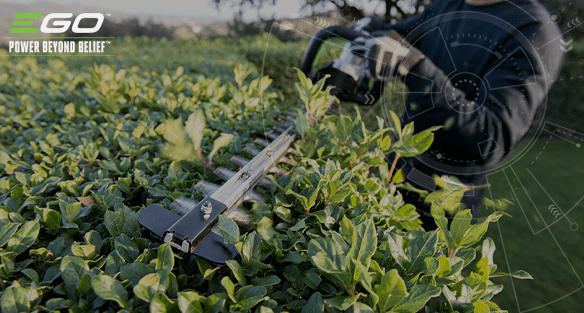If you’ve been keeping on top of shrub and hedge maintenance, you might only have needed to take a couple of centimetres or inches off with your battery powered hedge trimmer. These trimmings are easy enough to get rid of, with a few particular considerations that we’ll go into below.
On the other hand, if you’ve been indulging in some drastic reshaping or remodelling, or simply cutting back for winter, you might have more trimmings to dispose of than usual. This is often inconvenient and can leave some weekend gardeners scratching their heads.
Here are a few tips and ideas about disposing of, or repurposing hedge trimmings. We’ve included important information on toxic hedging too - which is more common than you might think.
Hedges are often poisonous
The notion of rewilding has entered the mainstream, so we don’t feel so bad about letting the grass grow longer. We might also feel okay about a bit of untidiness after trimming the hedge. This might be especially true if you’ve only had to take a small amount off to tidy it up.
It’ll decompose or get blown away - right?
Actually, leaving hedge clippings around might encourage fungal growth that could compromise the health of your hedge.
And also, while hedges are great for biodiversity generally, many types are actually toxic to humans or animals like horses and dogs. Common hedges that are toxic include yew, laurel (most), ivy, holly and privet.
Plan of action
Protest your hands and arms
We always advise a safety-first approach to any gardening task. While using a battery powered hedge trimmer, we advise protective clothing that fits tightly against the body to avoid snagging.
When clearing up the cuttings, gloves and long sleeves will protect your skin from sap from some species of hedge plant that might otherwise irritate.
Consider the best disposal method for your household
Toxic hedges aren’t generally a problem unless your dog likes to chew ‘sticks’ or your children want to build a den with the cuttings. There’s no need to have the whole lot replaced by a fence, as long as you manage its maintenance.
So, after trimming your hedge, make sure all the cutting and clippings are swept up and picked out of the hedge body.
Garden waste can actually be quite useful, even if it’s on the toxic list, and there are many potential ways you could dispose of or reuse it.
1. Dispose of via your green waste collection
This is an easy solution for the disposal of toxic and non-toxic hedge trimmings. Garden waste collected by your local authority as garden waste is turned into compost for agricultural land Some councils charge a small fee for regular kerbside collections.
2. Add to your compost heap
Break or cut longer woody pieces into smaller chunks for the compost heap. Wood waste, which is rich in carbon, needs to be balanced out with nitrogen-rich plant matter like lawn cuttings for compost.
3. Turn them into mulch
This is another idea that’s potentially better for non-toxic varieties if you’re worried about children and pets. As a covering for soil, mulch helps keep moisture in the soil, protects from frost and can even halt weeds in their tracks.
You’ll need a mechanised domestic shredder that breaks the wood into very small pieces. You can also use this material to create and maintain natural garden paths.
4. Use for fuel in your log burner
The Royal Horticultural Society notes that toxins from hedge plants are unlikely to be released by burning. However, clippings can be stacked in a secured area (away from children and pets) for up to four months to break down the toxins prior to burning if you like.
5. Build a dead hedge
Ironically, dead hedges bring more life to your garden! If you’ve got a larger garden or allotment, dead hedges are a creative and sustainable way to encourage biodiversity on your plot - and the materials are free!
A dead hedge is a boundary construction built from larger, longer hedge clippings (and also tree and shrub cuttings). Quite simply, the cuttings are laid or woven horizontally between two sets of posts, which keep them in place. As they decay naturally, they can be topped up with fresh cuttings.
Love your hedge
Check out our recent guide on how to trim your hedge in straight lines. If you’re looking for the right hedge trimmer for your needs, our models include domestic and professional grade hedge trimmers.
